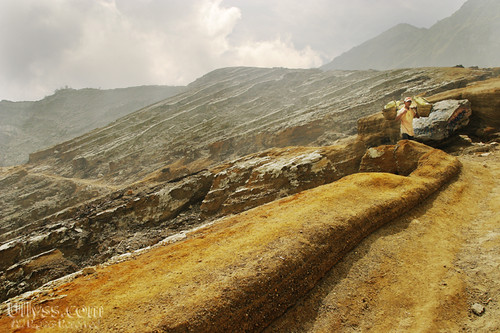
Papa Palheta Coffee Boutique, 140 Bukit Timah Road (off Hopper Road), Singapore
Reminding me of Central America – A Long Winded Story
Quite the coffee fanatic myself, I grew my love for quality coffee beans during my travels to Guatemala and Honduras, Central America. It was in Antigua, Guatemala that I came to realise that roasting was an important process after being introduced by a Coffee and Cacao roaster, Tostadoria (place of roast) who educated me with all the processes. These precious green beans came from beautiful local coffee farms that I had visited regularly on the weekends. The coffee red berries apparently have high anti-oxidants, had tasted the red berries, bittery with astringent aftertaste is great if you are in need of some Vitamin C. Families living around Antigua and Lake Attilan were growing coffee everywhere, both for personal use and for local market. You could smell the sickly sweet acidic fermented berries as you walk pass houses drying their beans out in the open tarmac. These are grown in rich volcanic land that gave the light floral sometimes herby tones to these coffee beans. Many have argued about the term Terroir, but in truth, the soil do give the beans its characteristics and giving its elusive and indescribable ‘Terroir’ term.
To say the least, I was practically hooked, my daily coffee pilgrimage to my favorite haunt consist of a cappucino in the morning, an expresso and cafe con leche (coffee with milk) in the late afternoon, and it was here that I was being educated with all the full flavors of coffee. It was cheap too, US$1 for a cup of good quality coffee or cappuccino that would have cost around US$6.00 back home. The baristas were a passionate lot and had high standard in brewing their coffee, my regular jaunt was just a hole in the wall, very popular with the locals. Often in the afternoon if I wasn’t doing much, I would head to the roasters, Tostadoria where they also roast cacao (chocolate) beans.
The Coffee experience spolit me, the education made me more picky with what I am drinking, can’t accept drinking highly sour and muddy water anymore. These days coffee appreciation has reached its fine wine or fine chocolate levels.
Back to Singapore, at Roaster, Papa Palheta

Found this place from another coffee enthusiast, who bought his coffee beans from this tiny little place that is situated in the quiet newton area. The coffee purveyors a rather passionate lot with very high standards in their roasting, something that I quite admire. It is great that the standard of coffee will be improved with these passionate local roasters. Hope that the coffee drinkers of Singapore would graduate from drinking awful Starbucks to appreciating coffee and demanding their expensive coffee to be brewed properly.

The first Saturday of every month, Papa Palheta conducts an hour long coffee tasting session.
I was rather excited, for this would be my very first coffee tasting ever, am totally an amateur among the serious coffee enthusiast. You could almost pretend to be like those professional coffee buyers at the Coffee/Tea Exchange of Calcutta or Chicago or South Africa, going through the process of sniffing the beans, running your spoon around the beans, sniffing the brew and slurping it then spill it out like what you do for wine tasting.
In April 2010, the purveyors presented Kenya Nyeri AA, Kagumo Co-op, its star of the month and added a total of 4 anonymous beans varietals for us to figure out.

First we looked at the beans, its color, texture and oily shine. Freshly roasted beans do not have that intense aroma and deep oily shine. It is best to let the beans mature and oxidise for 3-5 days before brewing the coffee. (Maybe a coffee professional can elaborate on the whole process)

The various beans were grinded by an expensive coffee grounder and presented along the tasting table. We examine the grounded coffee again, taking notes of its aroma, color and tonal ranges. Immediately you could tell which were the Asian beans, for they tend to be rather strong, slight toffee chocolate, sometimes buttery and herby at the same time. I had preferred the middle 2 bean varietals, less pungent than the ones on the side. There were some hints of sweetness and floral tones.

Next hot water is poured into the bowl, letting the grounded coffee powder sit for few seconds.

Apparently by pouring the hot water, you could tell which beans were recently roasted. Young freshly roasted beans would have lots of froth call crema (creme) due to the oils mixing with the water forming oxidative colloidal solids. There is a chemical explanation for this crema (or creme texture) but I shall not go deep into that, we learn that in school a very long time ago.

Older beans would have a crusty top, less crema and more gritty

This is the city roasted bean, darker and was roasted a week or so. Even more gritty, more crusty, less crema

We are told to describe the smells first putting our noses right at the edge of the bowl. Image shows a very freshly roasted coffee as reflected by the crema (This batch turn out to be winner of the Cup of Excellence Nicarguan section)

You are suppose to look at the coffee take notes on the appearance. Sniffing the top layer, then using a teaspoon to lift the crust away and smelling the aroma below the crust, to reveal another characteristics. I couldn’t really tell the difference, but repeated smells do highlight a few aromatic tones, too subtle for me to differentiate, I would need to train my olfactory palate for that.

Put your nose right at the edge of the bowl, slowly inhaling, then using the spoon to lift the crust, spooning a sample and aspirate the coffee first at the tip of your tongue, before letting drip to sides of your tongue and then your whole mouth. This will present the various flavor characteristics. I was disappointed with the first coffee sample A, it turned out to be the winner of Nicaragua Cup of Excellence , it was aromatic when grounded but the taste and mouthfeel was disappointing, and it got flat at the end, very little bitter sweetness that a coffee should have in its finish. It first presented boldly, with its flowery notes, light acidity at the beginning but was flat at the end and lost its lingering aftertaste rather quickly compared to the rest of the samples.

Coffee at the end of the tasting still retains its genuine crema. As the beans age, less crema would be produced as the beans ferments further. To tell a difference between ‘real’ crema and froth, the crema does remain longer while froth disppiates after a few minutes. Remember your food chemistry back in School? Colloidal suspension of oils and water and carbon dioxide would remain longer than just high pressure hot water and air froth mixture.

Rich creamy texture is only presented via the high pressure espresso method. I personally love digging my coffee spoon at this layer. The true test of good quality and properly brewed coffee is that you need no sugar or milk to mask its bitterness, the coffee should allow some sweetness to linger on your tongue.

Excellent cuppa Kenya here, rich creme, sweet herby fruit, flavor lasts after initial tasting. Kudos to the barista!

Beautiful coffee art for the latte, great coffee needs no sugar! nice bittery finish.




 In Mendoza, Argentina the famous Malbec wine region : The Malbec grape varietal thrives and where the best Argentina wine come from, also famous for its Dulce de Leche, a condensed caramelised milk product popular with Argentinians
In Mendoza, Argentina the famous Malbec wine region : The Malbec grape varietal thrives and where the best Argentina wine come from, also famous for its Dulce de Leche, a condensed caramelised milk product popular with Argentinians
















































You must be logged in to post a comment.